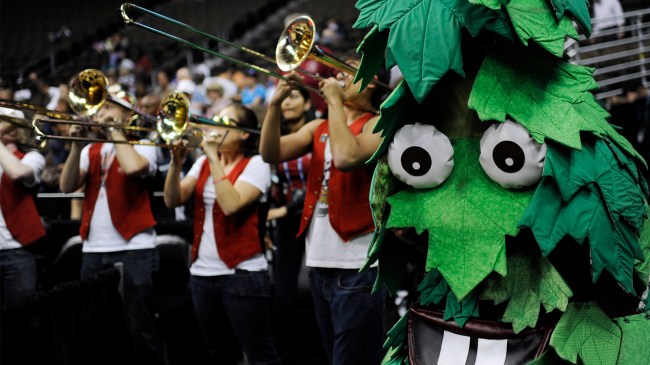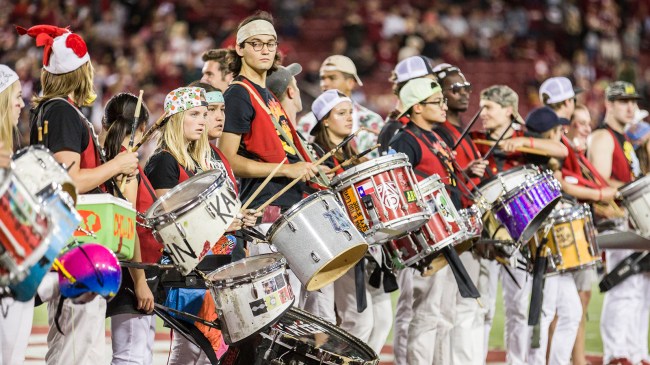
Getty Image
In 1845, the University of Notre Dame became the first college in America to form an official marching band, which has performed at Fighting Irish football games every single year since it made its grand debut all the way back in 1887.
It didn’t take long for other schools to get in on the action, and nowadays, the vast majority of college football games feature halftime entertainment in the form of the army of musicians who usually show off their instrumental prowess while performing a tightly choreographed routine on the gridiron.
There are a number of colleges that boast some pretty famous marching bands, but it’s hard to argue there’s any school with a more infamous one than Stanford University, which is officially known as the “Leland Stanford Junior University Marching Band.”
That group (which can trace its origins back to 1893) ensured it will always have a place in college football history courtesy of what unfolded during the final sequence of the showdown between Stanford and Cal in 1982, where it was immortalized by radio announcer Joe Starkey, who uttered the iconic quote “THE BAND IS OUT ON THE FIELD!” while covering what is simply known as “The Play.”
However, that’s just the tip of the iceberg when it comes to the controversial incidents the Stanford marching band has found itself involved in over the years—including one that almost resulted in it being banned from the state of Oregon.
The governor of Oregon tried to ban Stanford’s marching band over a halftime stunt

Getty Image
Stanford’s marching band is a bit of an anomaly thanks to how it operates; the organization is run by students as opposed to a director, and no musical experience is required if you want to join a group of performers that has eschewed traditional uniforms in favor of an unofficial dress code that involves a red blazer or vest, black pants, and “the ugliest tie you can get your hands on.”
The band also prides itself on a sense of irreverence that’s frequently manifested in the sophomoric sense of humor infused into the DNA of the (very loosely) choreographed routines it puts together for every game, which frequently include references to opposing schools and current events.
That attitude has repeatedly landed the band in hot water; they were once banned from performing at Notre Dame thanks to some questionable references to Irish-Catholic culture and apologized for a similar routine that drew backlash after it was performed during a game against BYU in 2022.
The marching band has also been banned from Disneyland thanks to an incident that transpired there in 1972, and the state of Oregon attempted to do the same in the wake of a fairly infamous halftime show that took place when Stanford headed up to Eugene to face off against the Ducks in 1990.
At the time, wildlife activists were pushing Oregon’s government to address the logging companies that were cutting down trees in areas home to the spotted owl, which had recently been labeled a “Threatened” species.
The Stanford band opted to use that topic as inspiration, as its director hopped on the microphone to call attention to the issue while members of the band formed a chainsaw before rearranging to spell out the words “OWL” and “AWOL.”
That didn’t sit well with either school, and Stanford quickly informed the band it wouldn’t be allowed to perform unless it agreed to allow the university to review its halftime scripts for approval prior to their performances.
That stunt also angered Oregon Governor Neil Goldschmidt to the point where he issued an official decree that ordered the Stanford marching band to stay out of the state moving forward.
However, he didn’t actually have the legal authority to do so, and they ultimately returned in 2001.